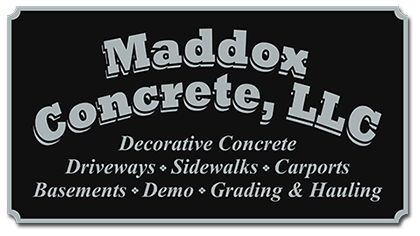While concrete is an extremely durable material, it will often experience damage over time. One of the most common types of concrete damage is cracks. Concrete cracks come in many shapes and sizes, each of which can identify the specific nature of the problem. Being able to properly identify these cracks will make it much easier to repair and maintain your concrete. Read on to learn about several different types and what these different concrete cracks mean:
- Expansion cracks: As the name implies, expansion cracks occur when concrete expands due to heat. The best way to prevent these cracks is with expansion joints, which are usually made from asphalt or rubber. These joints help relieve some of the stress on concrete surfaces by serving as shock absorbers. If you’re worried about expansion cracks, ask about expansion joints before having your concrete surface installed.
- Settling cracks: There are several things that can cause the ground on your property to settle. If this settling occurs below a concrete surface, the concrete will likely crack. This is because settling often creates a bit of empty space between the concrete and the ground. These types of cracks are usually hard to avoid, but relatively easy to repair. Just be sure to contact a specialist as soon as you notice signs of cracking.
- Plastic shrinkage cracks: Before concrete completely hardens, it’s in a plastic state. As moisture leaves the concrete, bits of empty space might appear between solid particles. This usually results in weaker concrete that’s more prone to cracking. These types of cracks, called plastic shrinkage cracks, often occur near circular objects installed within the concrete, such as pipes and drains.
- Premature drying cracks: Cracks can occur when concrete dries too quickly. There are two types of cracks caused by premature drying: crusting and crazing cracks. Crusting cracks can occur after adding a decorative pattern to your concrete. These cracks often appear around the edges of the decorative pattern. Crazing cracks occur when a concrete surface’s top layer dries too quickly. They often resemble spiderwebs or stained glass. Thankfully, neither crazing nor crusting cracks cause structural damage to a concrete surface. However, it’s still important to have them repaired as soon as possible.
- Overload cracks: You should always avoid overloading your concrete surface with too much weight. This could result in major damage, including massive cracks. Dumpsters, RVs and other large vehicles could all easily overload a concrete surface. If you’re unsure of how much weight your concrete can support, speak with a specialist in your area. You should especially avoid putting too much weight on your concrete if it has recently snowed or rained. The excessive moisture can weaken the concrete, making it more prone to cracking.
If you notice any cracks in your concrete, it’s best to contact a repair service right away. While it’s sometimes simple to repair small concrete crack types on your own, hiring a professional concrete contractor will ensure the job gets done right the first time. Contact Maddox Concrete, LLC today for all of your concrete service needs.

